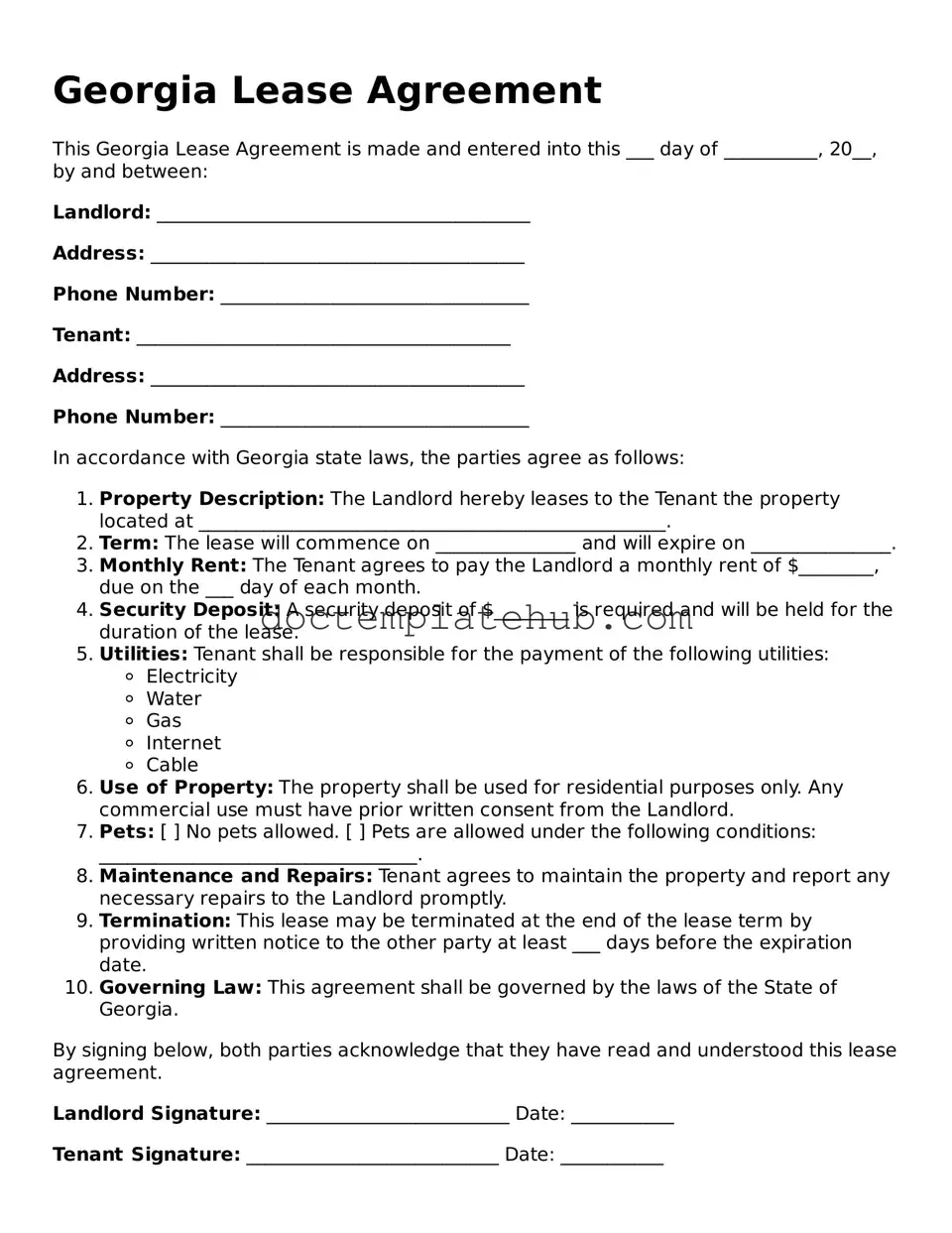What is a Georgia Lease Agreement?
A Georgia Lease Agreement is a legally binding document between a landlord and a tenant. It outlines the terms and conditions under which a tenant can rent a property in Georgia. This agreement typically includes details such as rent amount, lease duration, security deposits, and responsibilities of both parties.
What should be included in a Georgia Lease Agreement?
Essential elements of a Georgia Lease Agreement include the names of the landlord and tenant, property address, lease term, rent amount and payment details, security deposit information, maintenance responsibilities, and rules regarding pets or smoking. Clear definitions of these terms help avoid misunderstandings.
How long is a typical lease in Georgia?
Lease terms in Georgia can vary widely, but they commonly range from 6 months to 1 year. Some landlords may offer month-to-month agreements, which provide flexibility for tenants. It’s crucial to specify the lease duration in the agreement to ensure clarity for both parties.
Can a landlord increase rent during the lease term?
Generally, a landlord cannot increase rent during the lease term unless the lease agreement specifically allows for it. If the lease is month-to-month, the landlord must provide proper notice before implementing any rent increase, typically 30 days in Georgia.
What happens if a tenant wants to break the lease early?
If a tenant wishes to break the lease early, they may face penalties as outlined in the lease agreement. Common consequences include losing the security deposit or being responsible for rent until a new tenant is found. Communication with the landlord is essential to explore potential options.
Is a written lease required in Georgia?
While a written lease is not legally required for rental agreements in Georgia, it is highly recommended. A written lease provides clear documentation of the terms agreed upon, which protects both the landlord and tenant in case of disputes.
What are the rules regarding security deposits in Georgia?
In Georgia, landlords can charge a security deposit, but there is no state limit on the amount. However, the landlord must return the deposit within one month after the tenant vacates the property, minus any deductions for damages beyond normal wear and tear.
What are the tenant's rights under a Georgia Lease Agreement?
Tenants in Georgia have several rights, including the right to a habitable living environment, the right to privacy, and protection against discrimination. If landlords fail to uphold their responsibilities, tenants may have legal recourse to address these issues.
